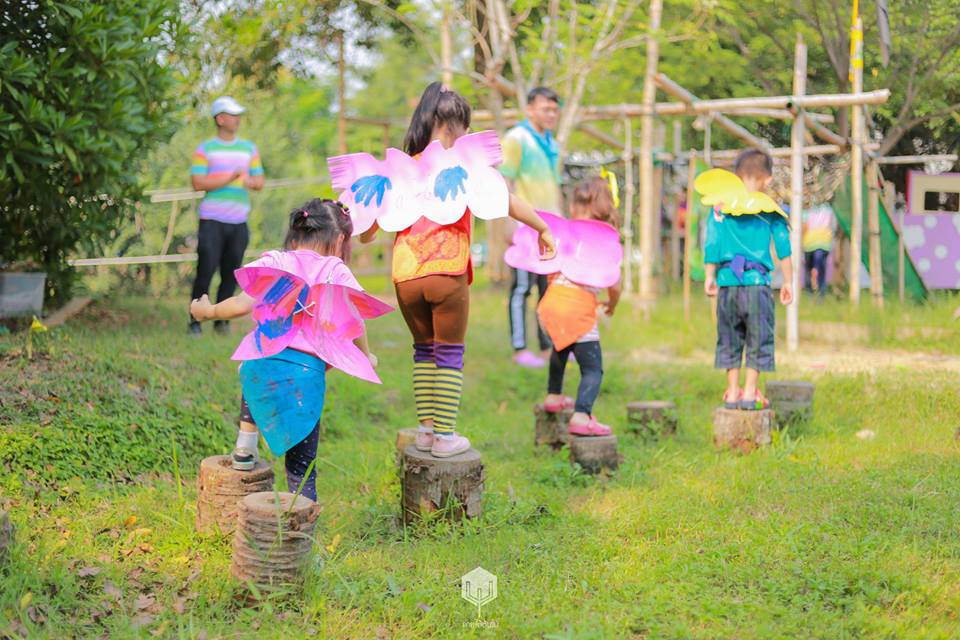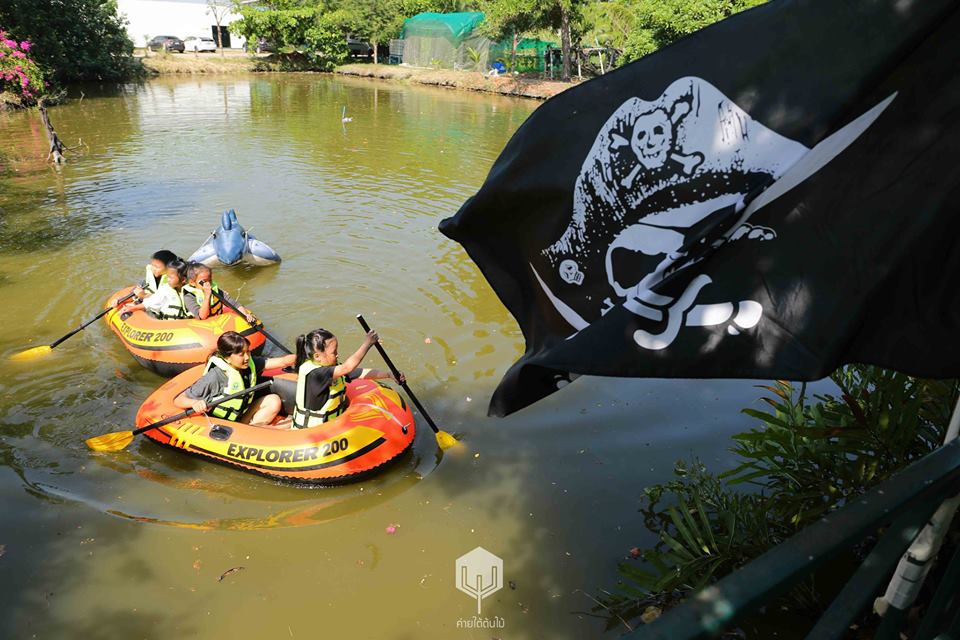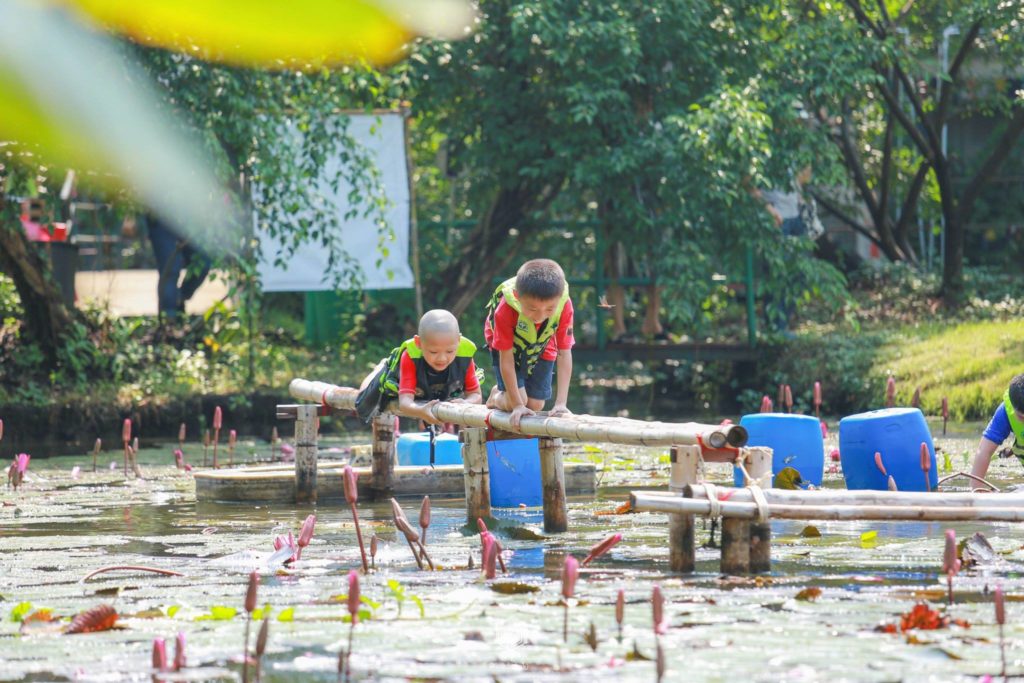
Designing Story-based Camps for Girls in STEM
Guest post from 2019 Summer Journeyer, Plub Limpiti.
“There’s nothing wrong with being a princess, we just think girls can build their own castles too” – Debbie Sterling, Founder and CEO of GoldieBlox
Over this summer at the MIT Playful Journey Lab, I spent my time researching the topic of “girls in STEM” and designing a camp to be implemented in Bangkok, Thailand.
GIRLS IN STEM
In science, technology, engineering and math spaces, girls face stereotype threats from a young age that come in a variety of forms, such as through the media, products or unconscious biases by the people around them. Research found a lack of confidence and interest in girls, despite their ability to perform well in STEM classes (Halpern et. al, 2007). One study found five-year old girls believe boys are better at robotics and programming (Sullivan & Bers, 2016). Nevertheless, girls are interested in STEM and priming them for it goes a long way (Modi, Schoenberg, & Salmond, 2012).
I was not a science, technology, engineering or math major, but I care about the topic because I only saw much later in life, the possibilities I would have loved if I had known. Many STEM classes are taught in an abstract manner, leaving students, especially girls, unaware of how it could relate to their lives (Munley & Rossiter, 2013). However in graduate school, I saw examples of much more interesting endeavors surrounding science education. I had the chance to visit the Exploratorium, a hands-on science museum in San Francisco and saw how they redesigned exhibits to be more engaging for girls. I was also exposed to projects and people at the MIT Media Lab, where they broke my unknowing conception of what science, technology, engineering and math means and could be (Particularly Neri Oxman and her lab). It made me reflect that as an educator, I want to provide multiple opportunities for children to explore multiple interests and not be limited by their current associations with STEM.
RESEARCH-BASED DESIGN
Reading through the research about girls in STEM, there are different speculations of why there is a lack of representation of women in said careers. Based on what different research found and proposed, I summarized* their recommendations into these nine points:
- Use stories and narratives as a driver
- Design for learners to solve problems
- Infuse plenty of opportunities for collaboration
- Make it relevant to their lives
- Encompass altruistic values
- Lower the stakes in the environment
- Include opportunities to play
- Emphasize the action of doing science rather than being a scientist
- Praise in a way that conveys abilities as expandable and improvable.
*Find sources in the references below.
These factors have been found to be important in creating meaning and motivation for understanding and doing STEM subjects for girls. Situating projects or problems in a narrative makes it more engaging for girls in particular. In addition, when students work towards a solution to a problem rather than grappling with abstract concepts, they could relate what they’re learning to their lives. Girls love working with each other much more than boys, and they prefer to create and learn about things they can use to help others rather than “cool” technologies. In addition, with the stereotype threats they face, lowering the stakes in the learning environment, such as not being penalized or compared with others, and having space to play with materials makes STEM more approachable. Research has also found that girls respond more positively to being described as “doing science” rather than “being a scientist”. Lastly, praising in a way that helps learners understand that their abilities are expandable creates a healthy attitude towards challenging content and skill learning.
As I jotted down notes of these points from different research, it seems that most of them are “good design principles” in general for all learners. What I really thought about though, were the points about using stories, relevance, altruistic values and emphasis of doing science. I want to design a learning experience for girls that is story-based, on a theme or topic that would be appealing, that includes helping others and shows them that they can too, do science, technology, engineering and math. My goal is to create a positive aptitude in STEM in a way that would be exciting and relatable.
STORY-BASED CAMP
The context of my design is Taitonmai Camp, a story-based adventure for children in Bangkok, Thailand that my team and I founded in 2014. We have created an immersive experience based on a narrative in an informal learning environment, designing for learning by playing in a make-believe world, full of interesting things to make and exciting quests to complete.
The range of our camp themes cover many children’s interests, such as Pirate’s Quest, Tales of Magic and Ninja Maze. In each of them, we imagine, invent, experiment and explore together. We currently have two out of twelve themes with a science focus, and their stories are around aliens and dinosaurs.
So I started to plan one for the girls.
FAIRIES & FIREFLIES
“Fairies & Fireflies” is a camp that I designed over my summer at the MIT Playful Journey Lab. As a part of a new STEM series, the plan is for the camp to be launched in November 2019, for 5-7 year olds in Bangkok, Thailand.
With input from my Taitonmai team, we created a world of fairies where children can explore the concept of light and electricity in multiple ways. We would be using coin batteries and LED lights to create gadgets (inspired by the Exploratorium’s Digital Bling), experiment with squishy circuits to make a city and create rainbows using water and prisms. They’re all in embedded in a story about a fairy that loves to invent in order to help others.
DESIGNING A STORY-BASED EXPERIENCE
When I designed “Fairies & Fireflies” as a story-based STEM experience, I asked myself the following questions:
- What character or storyline do I want to use, that would be appealing to children of that age?
- What STEM concept do I want to introduce and invite learners to play with?
- What are key activities that allow for experimentation and creation of some understanding of the concept I’ve chosen?
- What do those key activities represent in the world of the character that we picked?
- How do the activities relate to the main problems that happen in the story?
After I answered those questions, I went back to the nine solutions that I summarized from girls in STEM research, to see if my design could cover them.
1. Use stories and narratives as a driver
The world of fairies! There are many different types of fairies; those that grow flowers, those that make gadgets, those that create rainbows… and many, many more.
2. Design for learners to solve problems
A rare flower will be blooming in pitch darkness. How do we collect its magical pollen to save the fairy city? Lights from the fireflies are no longer enough.
3. Infuse plenty of opportunities for collaboration
Learners will be divided into small teams of 4-5 people. They will collect magical items together and build a squishy circuit fairy city.
4. Make it relevant to their lives
Fairies and fireflies are fascinating for children. Most children know of Tinkerbell, and that would be how we relate it to them.
5. Encompass altruistic values
We’ll be inventing gadgets to solve a problem that helps others, even if it is in a story.
6. Lower the stakes in the environment
There are no judgments on what learners make.
7. Include opportunities to play
Activities such as using LED and coin batteries, or squishy circuit are designed to be played and experimented with. There is no right answer.
8. Emphasize the action of doing science rather than being a scientist
Pointing out to students as they build, that they’re doing science, technology, engineering and/or math.
9. Praise in a way that conveys abilities as expandable and improvable
Suggesting to facilitators certain phrases to use as praise and what should be avoided.
PLAY TEST
To test out a part of the camp, we held a one hour long play test with three children ages 5, 7 and 8 years old at the MIT Open Learning office. I adjusted the story to fit with the context.
Story: Last night, some fairies sneaked into MIT on a mission to retrieve “energy balls” but were about to get caught, so they dropped some! It’s our job to retrieve back as many as possible but because they only appear in the dark, we have to make a light source in order to find them.
Activity: The kids played with coin batteries and LEDs, learning what makes it turn on, troubleshooting when it doesn’t, trying different colors and finding a way to turn it into a wearable. They used pipe cleaners, foam paper and a ton of tape! All together, they ended up with a rings, bracelets, a headpiece and a giant stack of LED and batteries taped together.
Quest: We tip-toed our way through the open office and into a dark (and quite roomy) supply closet where the energies ball (water beads) appeared! We used our light source to collect them all and it was a blast!
The combination of the story and water beads provided both motivation and meaning for the kids to build their own wearable light. Coin batteries and LEDs were very new to all the kids, but they all managed to build something in 20 minutes. It was not too hard for the 5 year old and it did not bore the 8 year old. With a wearable prompt, it made the activity more complex and opened it up for the kids to do it however they wanted.
Having seen the kids have fun with this activity, I can’t wait to bring “Fairies & Fireflies” back to Bangkok!
REFERENCES
Garcia‐Luis, V. and Dancstep, T. (2019), Straight From the Girls: The Importance of Incorporating the EDGE Design Attributes at Exhibits. Curator, 62: 195-221. doi:10.1111/cura.12310
Halpern, D. F., Aronson, J., Reimer, N., Simpkins, S. D., Star, J. R., Wentzel, K., & Simpkins-Chaput, S. (2007). Encouraging girls in math and science: IES Practice Guide. National Center for Education Research, Institute of Education Sciences, U.S. Department of Education.
Modi, K., Schoenberg, J. & Salmond, K. (2012). Generation STEM: what girls say about science, technology, engineering, and math. Girl Scout Research Institute, New York. Accessed 20 Sep 2019. Retrieved from http://www.girlscouts.org/content/dam/girlscouts-gsusa/forms-and-documents/about-girl-scouts/research/generation_stem_full_report.pdf
Munley, M. E., and C. Rossiter. 2013. Girls, Equity, and STEM in Informal Learning Settings: A Review of Literature. edited by GirlsRISEnet/ SAVI Planning Group. Accessed August 31, 2019. Retrieved from http://girlsrisenet.org/sites/default/files/SAVI Lit Review Sept 2013.pdf
Sammet, K., and L. Kekelis. 2016. Changing the Game for Girls in Stem: Findings on High Impact Programs and System-Building Strategies.
Sullivan, A., & Bers, M. U. (2016). Girls, boys, and bots: Gender differences in young children’s performance on robotics and programming tasks. Journal of Information Technology Education: Innovations in Practice, 15, 145- 165. Retrieved from http://www.informingscience.org/Publications/3547



